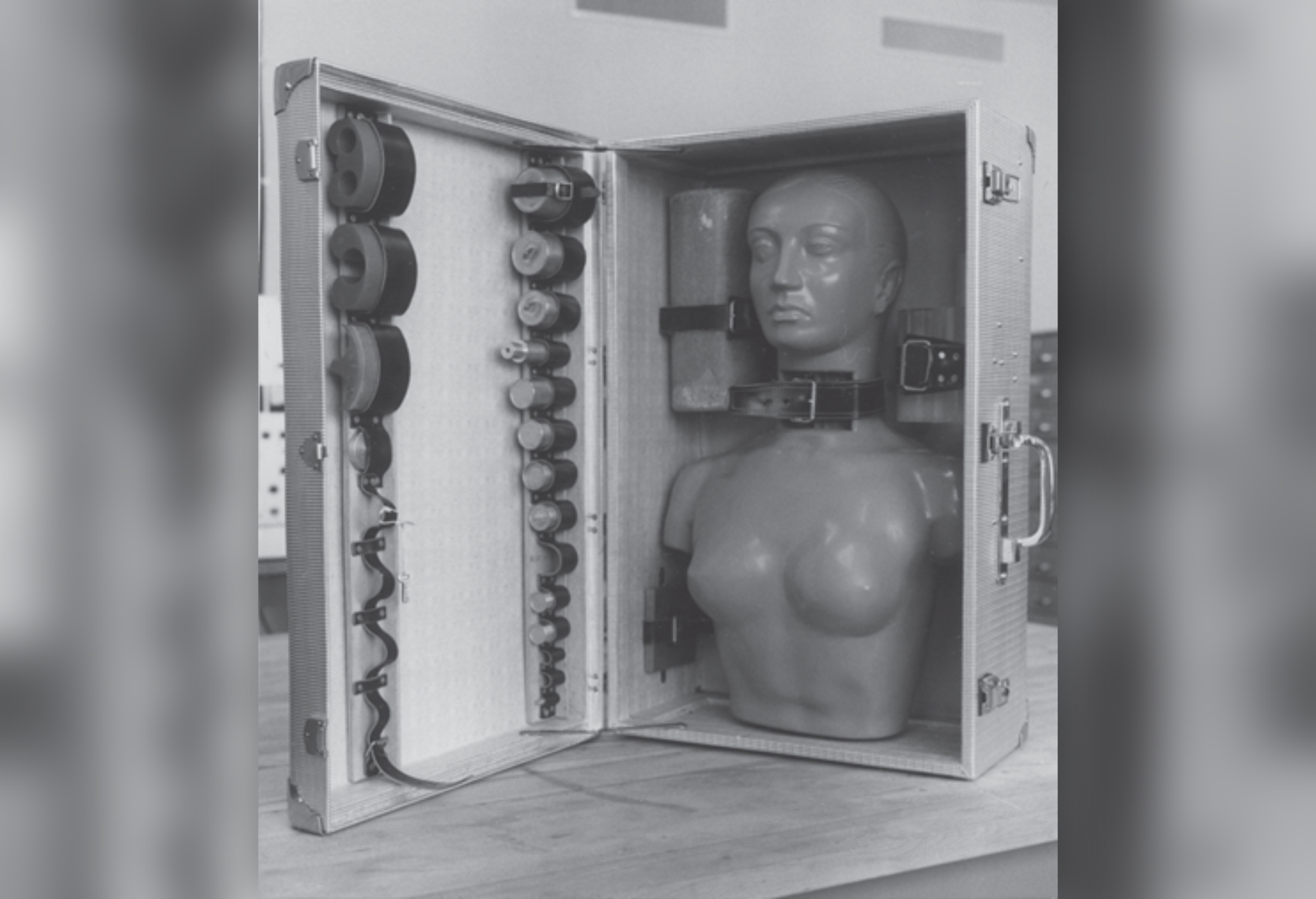
Ruling the world with Françoise in a suitcase
Maria Rentetzi
One of the most valuable diagnostic applications of radioactive isotopes during the 1960s was the determination of the uptake of radioactive iodine by the thyroid gland of patients suffering from thyroid disorders. Since there was not a standard method to carry this procedure worldwide the newly established International Atomic Energy Agency embarked in a major standardization project. IAEA scientists constructed a calibration equipment, a box like suitcase that included a dummy figure of the upper part of the human body, named Françoise, filled with a small amount of radioiodine to stimulate "body background." The suitcase included a number of standard vessels of various sizes and shapes containing amounts of mock iodine. From spring 1962 to the end of 1965 one of the IAEA scientists, Godofredo Gomez Crespo, visited 199 medical isotope laboratories in 41 countries carrying the calibration box. The aim was to standardize the measurements of the uptake of radioactive iodine worldwide. The Agency was willing to calibrate laboratory equipment in the UN Member States and at the same time to promote its standardized technique of measuring thyroid radioiodine uptake for general use. Throughout the 1960s the IAEA tried to curve a niche and legitimize its position not only within the system of UN specialized agencies but also within the broader scientific community. This case reveals one more issue: the unnecessary gendering of physics instrumentation while it brings front and center the legacy of sexism in the nuclear sciences.
Photo caption: Françoise in the suitcase (courtesy of the IAEA archives)